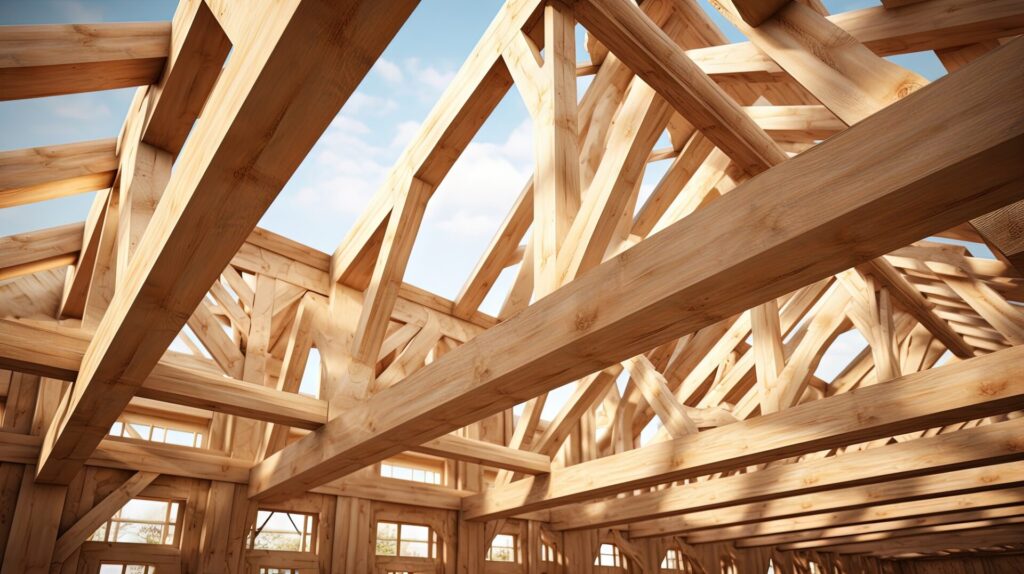The construction of a building is a complex process, with one of the most critical aspects being the installation of roof trusses. These trusses are the building’s backbone, supporting the roof and spanning the space above rooms. Essential for structural integrity and safety, they’re vital in ensuring the building’s overall stability and enduring strength against various external forces.
This article provides an in-depth look into the roof truss installation process, guiding one through each step and what to expect during construction.
Planning And Design
In the initial phase of construction, meticulous planning and design are paramount. This crucial stage includes the creation of detailed architectural drawings, which lay the groundwork for the entire project. Selecting the appropriate type of roof trusses is a critical decision, as is choosing the right materials to ensure both durability and compliance with design requirements.

Key considerations in the selection process include the building’s dimensions, unique architectural shape, and specific load-bearing needs. These are essential to support the structure. Every aspect of this phase is rigorously calculated to guarantee the building’s safety, functionality, and longevity.
Choosing The Right Manufacturer
Choosing the appropriate truss manufacturer is a critical decision in the construction process. For instance, it’s essential to opt for a manufacturer with a proven track record of reliability and excellence, such as Trueform Frames & Trusses and other similar options. They specialize in offering bespoke solutions that cater specifically to the unique demands of each project. Their expertise ensures that the trusses aren’t only robust but also structurally sound and precisely aligned with the project’s specific design requirements, guaranteeing seamless integration.
Manufacturing Process
After finalizing the truss design, the manufacturing phase commences, marking a critical step in the construction process. This intricate phase includes cutting, shaping, and assembling wooden components into the specified truss design. The focus on using high-grade materials coupled with meticulous craftsmanship is paramount.
This attention to detail and quality ensures not only adherence to design specifications but also the longevity and durability of the trusses. Such a dedicated approach guarantees that the trusses can withstand the test of time, remaining robust and reliable for many years.
Delivery And Site Preparation
Following their manufacturing, the trusses are transported to the construction site, a phase where meticulous site preparation plays a pivotal role in facilitating a seamless installation process. Essential preparatory tasks involve:
- Thoroughly clearing the designated area of any obstructions.
- Confirming the readiness and stability of the foundation.
- Strategically positioning the trusses close to the installation zone.
This careful organization and setup ensure easy access to the trusses, enhancing installation efficiency and reducing potential construction delays.
Installation Process
The installation of roof trusses is a pivotal and intricate stage in the construction process, requiring precision and attention to detail through several key steps:
- Laying Out the Trusses: Initially, trusses are arranged according to the specific design plan. This step is critical for ensuring proper alignment and positioning on the building, setting the stage for accurate installation.
- Hoisting and Placement: Using cranes, each truss is meticulously lifted and accurately placed onto the top plates of the building’s walls. This phase demands exceptional precision to ensure that each truss is positioned exactly per the design specifications.
- Securing the Trusses: Once correctly positioned, the trusses are temporarily braced to provide immediate stability and maintain alignment. This is followed by permanently securing them to the building’s structure, solidifying their place and role in its framework.
- Installing Permanent Bracing: To further enhance stability and ensure an even distribution of loads, permanent bracing is added. This step is essential for reinforcing the structural integrity of the trusses and the building.
- Quality Checks and Adjustments: The installation process is accompanied by continuous quality assessments. These checks confirm that the trusses are installed correctly and meet all safety and design standards. Whenever necessary, adjustments are made to realign and properly secure the trusses, ensuring they perform their structural role effectively.
Each of these steps is carried out with the utmost care to guarantee that the roof trusses aren’t only installed correctly but also contribute to the long-term stability and safety.
Inspection And Compliance
Following the installation of the roof trusses, a thorough inspection is carried out by qualified professionals. This critical step is to verify that the installation aligns with all relevant building codes and adheres to stringent safety standards.
The inspection is pivotal in ensuring that the construction meets the necessary regulatory requirements, leading to the issuance of essential certifications. This process isn’t just a formality but a fundamental measure to guarantee the building’s structural integrity and overall safety, providing peace of mind for both builders and occupants.
Finishing Touches
Once the trusses are securely installed, the construction process advances to the final stages, completing the building’s exterior. This involves the installation of roof decking, which acts as a base for other roofing materials. Subsequently, insulation is added, which is crucial in enhancing energy efficiency and comfort within the building.
Lastly, applying the selected roofing materials provides the finishing touch, ensuring the building is well-protected from environmental elements. These steps collectively encapsulate the structure, fortifying it against weather conditions and completing its aesthetic appeal.
Conclusion
Roof truss installation is a complex but crucial part of construction. It requires meticulous planning, precision, and expertise. With the information above, one can understand what to expect during this process and ensure a smooth and successful project. With the right team and materials, the building will have a strong, durable roof that lasts for many years.

